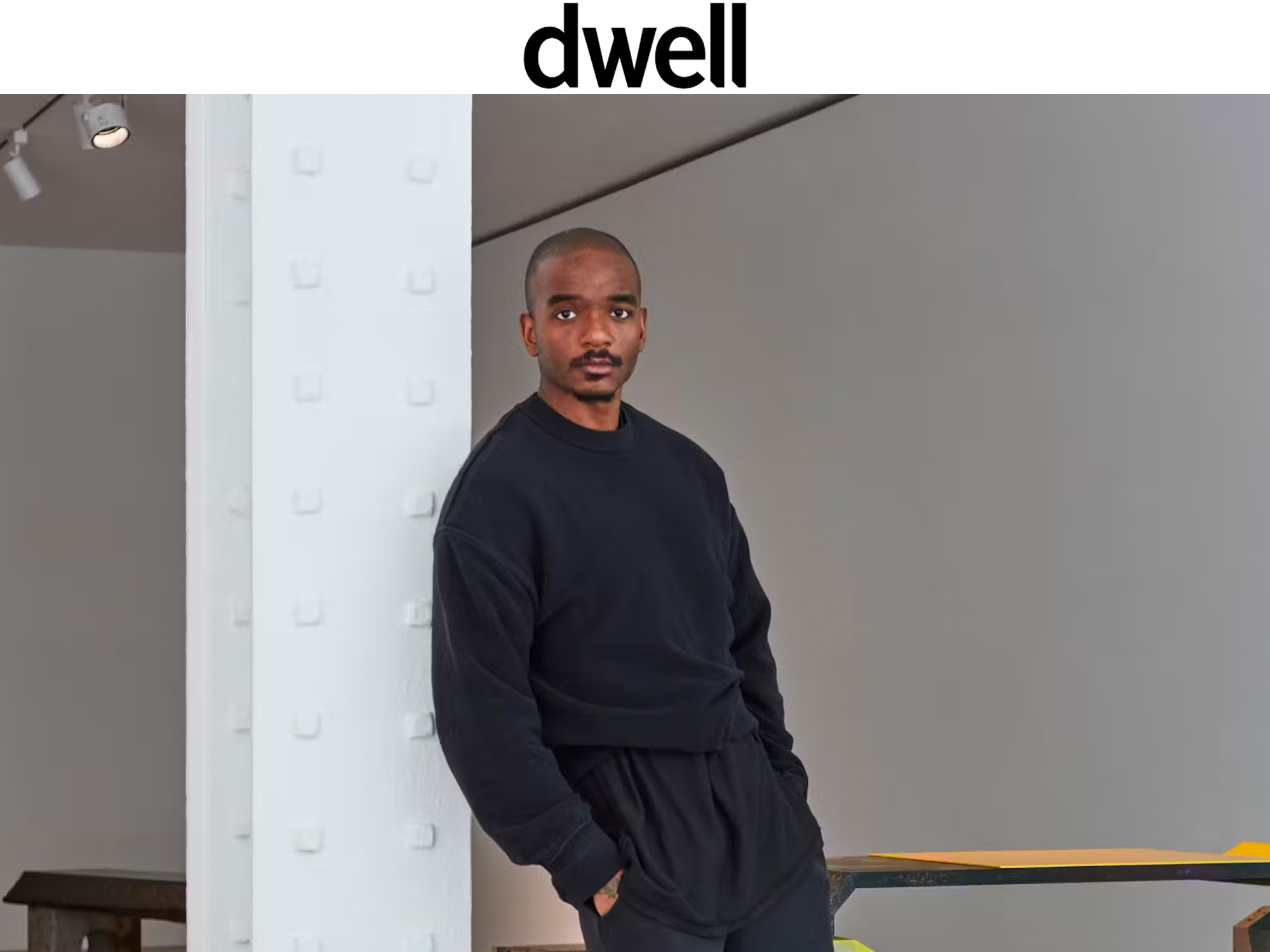By Adrian Madlener
Dr. SamuelRoss doesn’t fit in a box, even though a lot of what he designs does. At just 32, the creative has worked with Apple, Nike, and luxury group LVMH. Earlier this year, his ongoing collaboration with Swiss watchmaker Hublot and the release of his uniquely styled Big Bang Tourbillon timepiece stole headlines where the fashion and art worlds collide. Later this year, with his studio, SR_A, the British designer will debut a collaboration with bathroom giant Kohler, further demonstrating his agility and fearlessness across industries.
Trained as a graphic designer, Ross honed those traits under prolific creative Virgil Abloh, the late menswear director at Louis Vuitton and founder of luxury streetwear label Off-White. Ross established his own high-end brand, A-Cold-Wall*, in 2014, debuting with tees, hoodies, and high tops with messaging that spoke to the economic disparities he experienced firsthand growing up in inner-city London. His work often has something to say, whether it’s clothing, a visual campaign, an interior installation, or the brand new furniture collection he debuted earlier this month.
Ross’s fourth line, now on view at New York’s Friedman Benda gallery, comprises six sculptural one-off designs that combine a striking post-industrial bent with West African traditions. While earlier furniture pieces explored the past 300 years of personal and collective trauma of the Black experience, the new series, called Coarse, reflects the designer’s renewed optimism, touching on themes of generosity, community, and tenderness. We spoke with Ross to learn how an object as common as a stool can be both a place to sit and a work of art.
Dwell: Tell us about your latest collection. What does it represent for your creative evolution?
Ross: Lately, I’ve been considering my contribution to the field in terms of what furniture and design can offer beyond form and usability. For this latest collection, I’ve been thinking about how alchemy allows material to have a new life. I wanted to see if I could integrate uncommon components that represent bodily nourishment such as milk with the synthetic textures and surfaces of industrial materials like plywood and OSB. I’m figuring out how to build a new language through materiality and the memory it can carry.
Your work is often framed around questions of how we deal with history, representational imbalances, nature, decay, and emotional response. How is your furniture more than just furniture?
It’s about being conscious of the times we live in. We’re always moving between different architectural and design movements and there’s some absurdity to that. We appreciate the organic nature of certain materials as much as we do the uniformity of certain shapes. If you look at the ANAESTHESIA I desk, you see cast concrete but there are recesses and reliefs that break with the standardized application the material is normally used for. In addition, the surface has been treated with burned milk and honey which draws back to the past and incorporates a West African perspective.
Produced with fired wenge wood I sourced in Nigeria, the BORDER table holistically evokes the complex reality of extracting material from a former British colony and bringing it back to the U.K. to be processed. The design’s form also expresses the different literal and conceptual levels of the African diasporic experience. The use of firing throughout the collection refers to the notion of embalming the body as a type of self-fortification and preservation, an unexpected way to express exuberance and celebration. The SLAB bench plays on the utopian ideas of brutalist architecture and open access—the playgrounds one can find in a housing development of that style. For many, these structures serve as a first encounter with public art.
The new pieces incorporate tactile elements, bold colors, and recognizable forms. Why is it important that your abstract designs are also relatable?
Furniture is a great format to express different concepts while still being constrained by the practicalities of proportion, ergonomics, and function. Like fashion, it cocoons the body. In terms of materiality, furniture provides the user with physical, haptic engagement. It invites you to feel comfortable or experience something new. Furniture-making is ultimately democratic. Using colors and visual elements that can be understood by anyone is important. The use of bold primary tones to wrap geometric forms contrasting rough rock-formed edges entices the viewer to interact with pieces like BIRTH AT DAWN.
Virtual technologies are increasingly impacting our world. How can we still value that kind of physical interaction?
I’m actually optimistic about rapid innovations in artificial intelligence. These tools will force us to be more conscious, appreciative, and thoughtful about how we engage with our immediate surroundings. You have to think of what the pinhole camera did to fine art painting. It pushed the medium into abstraction which inspired amazing results. While having the potential to reaffirm the human experience, these new tools are also allowing us to be more elastic in what we accomplish.
With that in mind, what does it actually take to be successful as an interdisciplinary designer?
Graphic design, what I studied, naturally lends itself to different fields. You only have to think of [Lella and Massimo] Vignellis, who famously designed the New York Subway but also created furniture and other objects, even sound. The advent of the Adobe software suite enabled many creatives to move easily in between everything from illustration to film editing.
The trick for me is to be able to work with various types of talents that are especially skilled in their specific crafts. Being open to different collaborations and perspectives gives you the flexibility to operate in fashion and product design at the same time. As with anything, it comes down to finding the right people to work with but also, as Virgil taught me, sticking to your initial goals. With Coarse and other furniture design collections, however, I am able to get my hands dirty and work with the material directly as a way of better understanding what I’m ultimately after.










